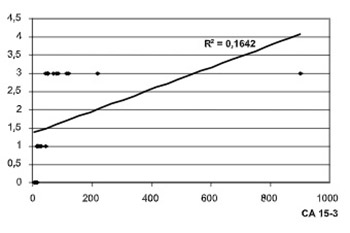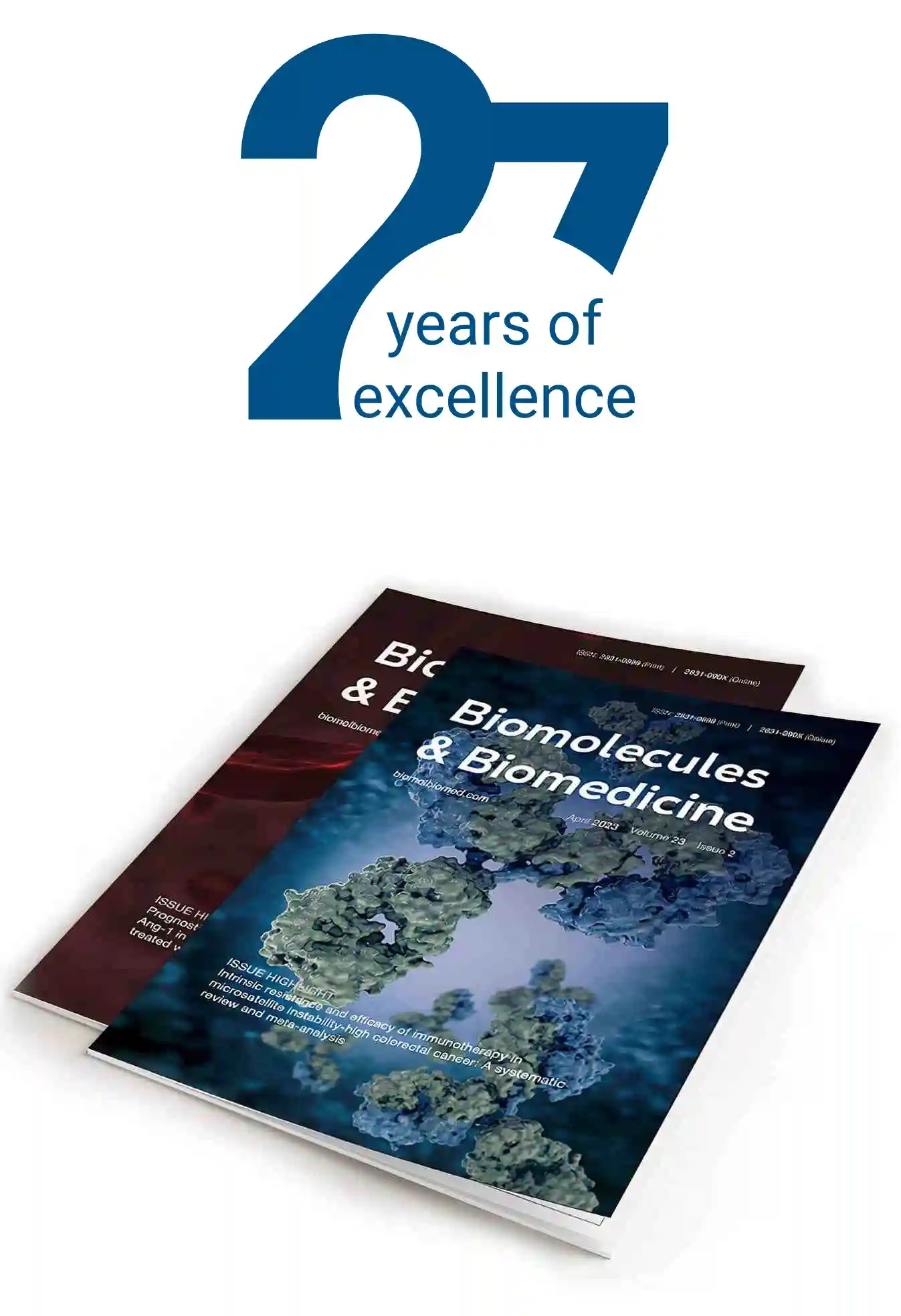Role of bone scintigraphy and tumor marker-Ca 15-3 in detection of bone metastases in patients with breast cancer
DOI:
https://doi.org/10.17305/bjbms.2005.3331Keywords:
breast cancer, bone metastases, bone scintigraphy Ca 15-3Abstract
Breast cancer is one of the most frequent types of cancer affecting women. After hematogenous spreading of cancer, axial skeleton is most frequently involved. Bone scintigraphy is commonly performed in detection and evaluation of bone metastases. In breast cancer, marker Ca15-3 is widely accepted in follow-up and detection of disease recurrence. Aim of the study was to correlate levels of tumor marker Ca 15-3 and presence of bone metastases detected by bone scintigraphy. Study included 25 patients with breast cancer, previously surgically treated. All patients underwent total body scintigraphy. Ca 15-3 was measured by radioimmunoassay. Presence, number and location of bonemetastases were correlated with Ca 15-3 levels. Bone scintigraphy revealed bone metastases in 16 (64%) patients. 11 (44%) patients with metastases and 1 patient (4%) without scintigraphically visible metastases had elevated Ca 15-3 levels. Significant difference in distribution of metastases was found for spine (t=3.930, p=0.008). Correlation between intensity of radiopharmaceutical uptake and level of Ca 15-3 in patients was positive (r =0.405). A weak correlation was found between number of metastases and level of Ca 15-3 (r=0.139). Significant differences in Ca 15-3 level was found in patients with metastases compared to patients without metastases (chi square 0, p =1.0). Since no significant correlation was found between level of Ca 15-3 and number of metastases, we consider scintigraphy an appropriate method for assessment of bone metastases in breast cancer.
Citations
Downloads

Downloads
Published
Issue
Section
Categories
How to Cite
Accepted 2018-03-11
Published 2005-02-20









